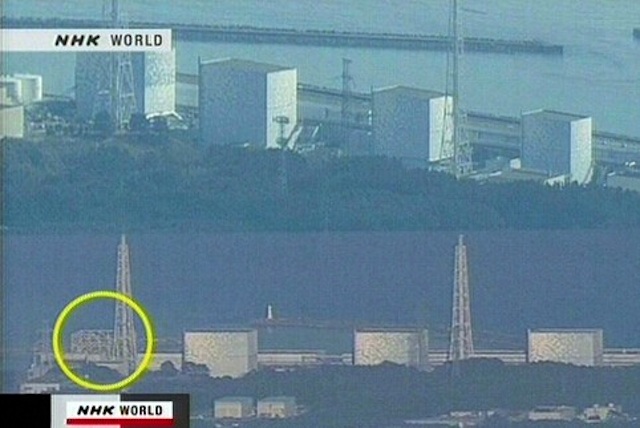Protection after a nuclear blast
Protection in case of a cooling failure of Japanese Nuclear Power plants after earthquake and tsunami on 2011 March 11.
The first step is to survive the nuclear blast, itself. After that, you must take special precautions to protect yourself and your family from the residual dangers from the blast. The radiation from a nuclear blast may make normal living conditions deadly for a time. Preparation is key to both initial survival and to staying safe in the days and weeks that follow.
Instructions
- The initial nuclear blast contains extremely powerful thermal winds, capable of collapsing the lungs, rupturing eardrums and creating deadly stress upon internal organs. In addition, debris becomes deadly when carried on the nuclear blast winds. Survival rates increase if you weather the blast from a protected underground room but if you are far enough away from the bomb’s epicenter, you may survive without taking cover.
- Change your entire thought process if you want to protect your family after a nuclear blast. Two waves of radiation accompany the blast. The first is immediate, known as thermal energy. This energy is very hot and can burn skin, plants, animals and blind humans with its intense light and heat. The second from is residual radiation and exposure to this in even moderate quantities can result in severe health conditions, cancer and death.
- Isolation is imperative after a nuclear blast in order to protect your family. Radioactive particles will settle on the soil and in the above-ground water supply. Plants may not grow in an area in close proximity to the epicenter of a nuclear blast.
- Preparation is the key to survival. With the threat of domestic terrorism, every family should make provisions to live in a basement shelter, community shelter or underground room until the radiation subsides. With this in mind, the shelter must be stocked with the items imperative for survival.
- Keep a couple of month’s supply of fresh water in your shelter. You can fill old plastic milk jugs after washing thoroughly. Be sure to refresh your water supply twice a year. A good time to do it – is when you change the clocks in the spring and in the fall. Keep rolled bedding and mats, along with canned and dehydrated foods that need no additional preparation.
- Reduce necessary exposure. Even with the best pre-planning, you may have to leave your shelter before the residual radiation dissipates. Depending upon how far you are from the location of the blast, you are in more or less danger. Put as much iron, concrete or lead between you and the environment. When you must go outside, plan your excursion and make it as quick as possible.
- Clean your own water. Stored water takes up a lot of room and you can only stock so much. However, radiation particles in the water supply are deadly. The only reliable method of removing radiation from your water is to distill it. Purchase or make a distiller and store it in your shelter.
- Remain in your shelter for one week. This means you must not only have food and water ready, you must also have toilet containers. After one week, you may come out for only a few minutes, to dump the accumulate waste and to gather any needed supplies and food. Animals will be radiated but if you must eat one, cook it extremely well done. Keep a cellar of root vegetables or dig root vegetables if possible.
- Keep the means of communication alive. After the nuclear blast, most, if not all, media will be compromised. Purchase and store a ham radio in your shelter in order to discover what rescue operations are underway. Unless you know you are safe, do not transmit from your ham radio, the signal is traceable.
Source: eHow.com





